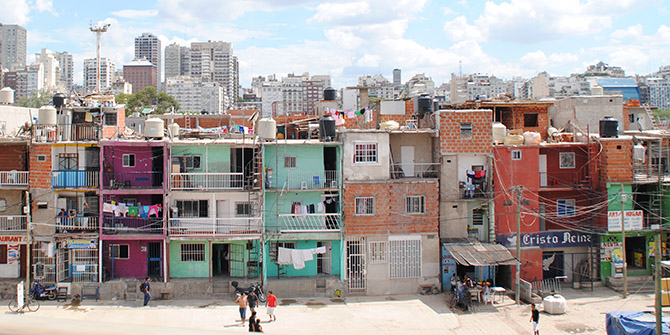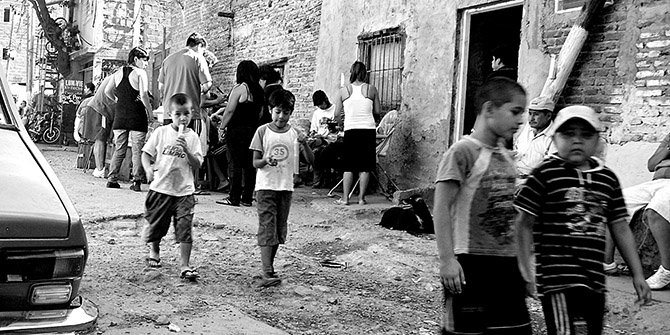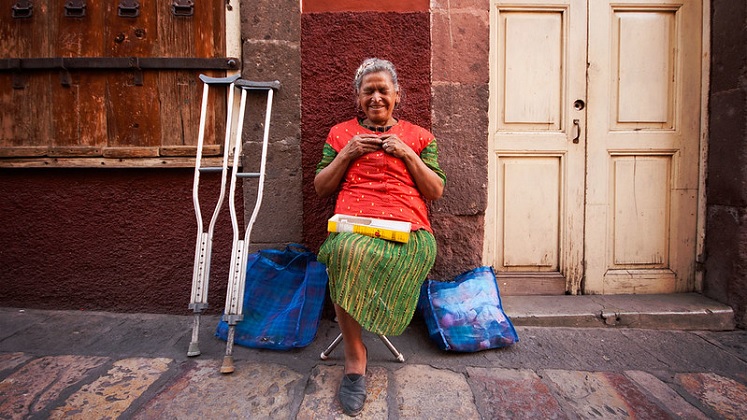
 Innovations in social policy that respond to the multi-dimensionality of exclusion could help to bring down the labour-market barriers facing residentially marginalised youth in Argentina and beyond, write Simca Simpson Lapp (Queen Mary) and Eduardo Lépore (Pontificia Universidad Católica Argentina).
Innovations in social policy that respond to the multi-dimensionality of exclusion could help to bring down the labour-market barriers facing residentially marginalised youth in Argentina and beyond, write Simca Simpson Lapp (Queen Mary) and Eduardo Lépore (Pontificia Universidad Católica Argentina).
The informal settlements of Buenos Aires, historically known as villas miseria or simply villas, are enclaves of concentrated poverty that remain a striking manifestation of the inequality and socioeconomic marginalisation that persists at the core of this South American metropolis.

Once believed to be temporary residential settlements resulting from accelerated urbanisation, the villas have grown continuously since the 1980s and are now home to nearly 10% of the city’s population. This includes roughly a third of its poor, many of whom are intra-regional migrants from Paraguay, Bolivia, and Peru.
The reality of informal settlements is by no means unique to the Argentinean context. As of 2012, there were 111 million people living in slums in Latin America and the Caribbean. Though the informality of these settlements refers to the lack of formal legal claim to land and housing, a lack of substantive access to formal sector employment is also endemic in these neighbourhoods.
Our recent research in Buenos Aires provides empirical evidence that where young people live in the Capital impacts on their opportunities for social inclusion and mobility. In fact, our analysis of data from the 2012 Buenos Aires Household Survey and a Catholic University of Argentina survey of young people in seven different villas reveals that villa youth are less likely to enter skilled formal-sector employment, independent of family socioeconomic characteristics such as income.
This effect is compounded for young villa dwellers in households with highly precarious parental-employment status (unemployed, self-employed in low-skilled labour, domestic workers, and so on). Consistent with what have been termed “neighbourhood effects” theories, these spatial disparities in opportunity may be explained both by residential discrimination and by the reproduction of various forms of informality.
This new light shed on the cumulative mechanisms of exclusion can help us to rethink some of the ways that social policy addresses youth employment in contexts of concentrated poverty. Residentially marginalised young people often lack family or kinship ties to those employed in the formal sector. Mainstream youth-employment policies that neglect this factor may be ineffective if used in isolation. Education policy could have a role in ensuring that young people build socially beneficial ties outside of their family context, beyond the informal settlements, and into the world of formal employment. Active labour-market policies, such as workplace training, could also help to provide young people with exposure to formal sector employment, increasing the chance of future formality.

Centre-right President Macri recently unveiled Plan Empalme, an employment program allowing recipients of certain state benefits and training programs to transition into formal private-sector employment through provision of government subsidies to employers during the first two years of employment. The government estimates that approximately one million current benefit recipients would be eligible for the programme.
In Macri’s words:
People who received social benefits thought that it would be for a time until they got a job, but many years have gone by and they are in the same situation, and their children see that their parents and grandparents have never been able to work. Everyone who is on one of these benefits plans will be able to take up a job without losing them, and companies can include the government subsidy within their salary and facilitate them taking up [a formal sector job].
It remains to be seen to what extent this programme will lead to increases in formal-sector employment for young people living in informal settlements and/or their parents. Another potential issue relates to whether incorporation into formal-sector employment can be sustained once the two-year subsidy expires. It could incentivise employers to hire workers into the formal sector that would otherwise have been unemployed or working informally. However, in its current iteration, it fails to address the underlying territorially bound mechanisms of exclusion faced by young people in informal settlements.
The role of gender is also crucial to understanding the dynamics of exclusion and inclusion in urban informal settlements. In Buenos Aires especially, it may have an under-explored role in explaining both how young people in villas access formal employment and what forms of employment are considered skilled in the first place.
A significant proportion of women living in Buenos Aires’ villas are employed as domestic workers, home-care workers, and in-home childcare providers. However, despite professionalisation programmes and legislative reforms seeking to increase formalisation and substantive access to workers’ rights in this sector, these women are excluded from common statistical measures of quality employment.
More broadly, as our research concludes, employment policies for young people living in informal settlements need to go beyond individual policy areas. Because residential marginalisation in informal settlements is a barrier to young people’s employment outcomes, policies that promote mobility within the space of the city may be the key to enhancing social mobility. This will require more comprehensive policy-design strategies that address the various dimensions of exclusion.
One such proposal would be a territorially based strategy to coordinate young people’s access social services, education, and training opportunities, as well as to transportation, which is key to facilitating spatial mobility between informal settlements and surrounding neighbourhoods.
Urban integration has no simple policy solutions, but innovations in social policy that consider the multi-dimensionality of exclusion could make real strides towards breaking down the barriers that residentially marginalised youth still face in the labour market, be it in Buenos Aires, in Argentina, or in Latin America more broadly.
Notes:
• The views expressed here are of the authors rather than the Centre or the LSE
• This post draws on the authors’ recent article “Concentrated Poverty and Neighbourhood Effects: Youth Marginalisation in Buenos Aires’s Informal Settlements” (Oxford Development Studies, 2017)
• Please read our Comments Policy before commenting





